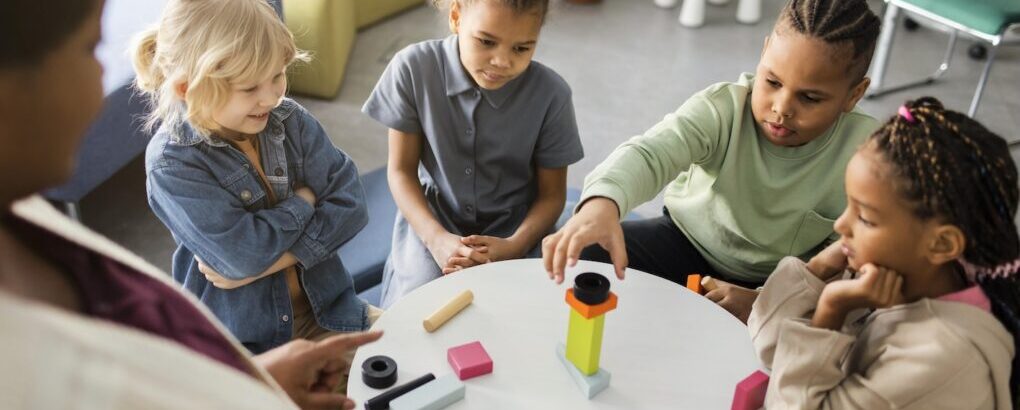Blog Categories
Search Blog
Blog Categories
Group or One-on-One Support? How to Choose the Right Fit for Your Child This Fall
As the school year approaches, many caregivers are reflecting on how to best support their child’s development.
Whether your child has difficulties with conversations, friendships, emotional regulation, or navigating social situations, you may be wondering:
“Is a group or one-on-one therapy setting best for my child?”
The truth is, both approaches offer powerful benefits. Choosing the right fit depends on your child’s current needs, strengths, and therapy goals. Here is a breakdown of the value of group-based support for children, as well as how individual therapy might fit in.
Why Consider Group Support for Your Child?
- Real-Life Practice with Peers
Group settings allow children to build skills with real peers. They can practice taking turns, reading social cues, managing emotions, or navigating tricky conversations – all within a supportive and guided environment. - A Sense of Belonging
Children often feel a sense of relief when they realize they are not the only ones who find certain skills difficult. Seeing others work through similar challenges can help normalize their experience and boost their confidence. - Learning Through Observation
In a group, children don’t just practice – they also watch. Observing peers handle social situations gives children valuable models for how to respond in similar moments, and helps them understand how others communicate and interact. - Motivation Through Connection
For some children, the group dynamic can increase engagement and motivation. Making a new friend, participating in a shared activity, or gaining encouragement from peers can help therapy feel fun and meaningful.
When Individual Support Might Be a Better Fit
Individual therapy allows for more personalized goals and strategies, and it may be the best starting point if:
- Your child feels overwhelmed in group settings
- Your child benefits from more focused adult attention
- Your child’s challenges are highly specific or need a foundational level of support
It is also a great option for working closely with caregivers to tailor home-based strategies.
What We Recommend
You don’t have to choose one approach indefinitely, and often, the best support includes a combination. Some children thrive when they begin with individual sessions and later join a group. Others benefit from a group setting with one-on-one check-ins to target specific goals.
As you plan for the upcoming school year, now is a great time to reflect on your child’s strengths, challenges, and needs. Whether you choose group therapy, one-on-one sessions, or both, the most important thing is that your child feels safe, supported, and understood in the process.
Ready to explore your options?
We’re here to help you decide what’s best for your child. An important consideration: many of our group therapy programs are eligible for insurance coverage. Reach out to learn more about our Fall group programs and individual sessions – both designed to support your child’s social, emotional, and physical success. Contact us to learn more.





